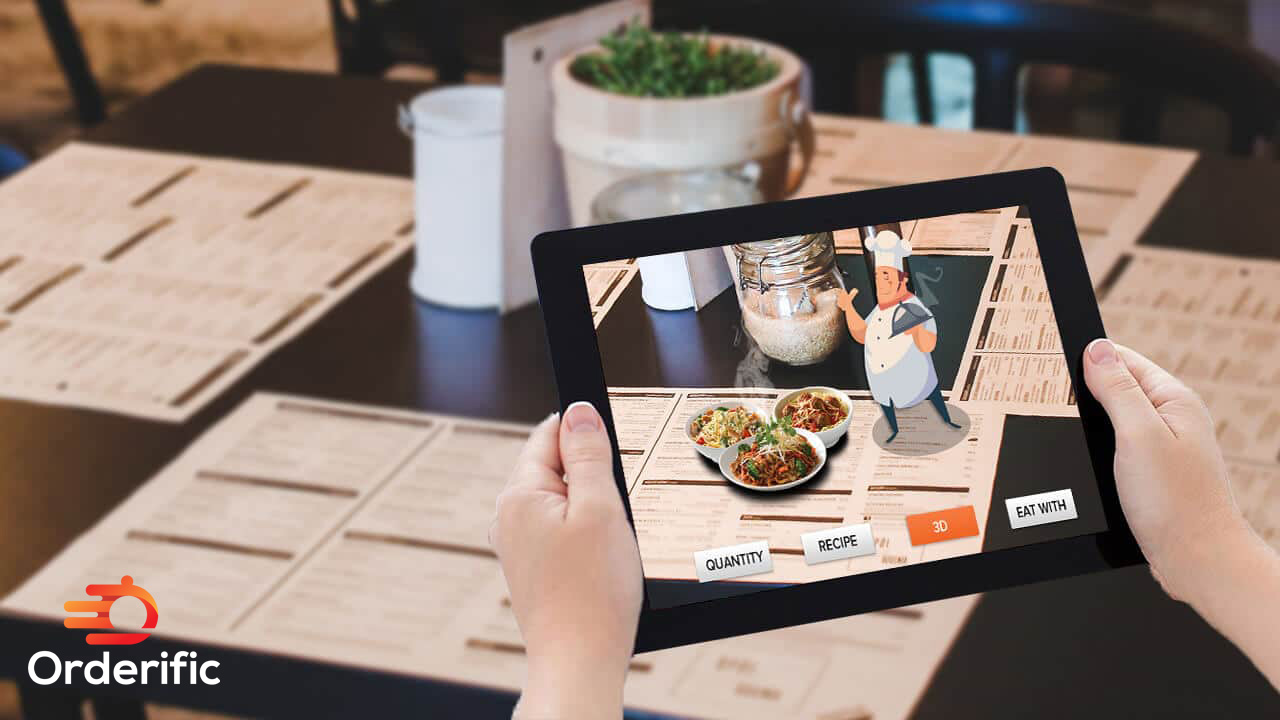Introduction
In the competitive restaurant industry, striving for excellence is a relentless pursuit. But what if there was a strategy that could provide restaurant owners with the insights needed to enhance their operations? Enter the world of restaurant benchmarks. Understanding benchmarks, such as table turnover rate and food cost percentage, can be a game-changer in improving customer satisfaction, controlling cost, and ultimately, boosting profit.
Remember, restaurants that fail to benchmark may miss out on opportunities for increased profitability and risk being left behind in the race. So, stay competitive, stay informed, and start benchmarking. Because when it comes to achieving excellence in the restaurant scene, the proof is in the pudding – or, in this case, the profit margin!
What Are Restaurant Benchmarks?
Restaurant benchmarks are standard measures used to compare and evaluate the performance of a restaurant. They provide actionable insights that can help restaurant owners make informed decisions. For instance, the table turnover rate is a crucial benchmark. It refers to the number of times a table is occupied during a particular period. A higher rate often signifies increased efficiency and profitability. However, it’s a delicate balance – rushing customers can negatively impact their dining experience.
Another critical benchmark is the food cost percentage – the ratio of the cost of ingredients to the revenue generated from selling that dish. Keeping an eye on this benchmark enables restaurant owners to price their words appropriately, manage wastage, and control costs, all contributing to the bottom line.
Why Should Restaurants Use Benchmarking?
Benchmarking in the restaurant industry is not just a suggestion—it’s a necessity. It offers a detailed and data-driven view of how your restaurant is performing compared to industry standards or competitors. Beyond just a comparison tool, benchmarking can be a powerful mechanism to identify improvement areas and inspire growth strategies.
Think about it like this: How can you adjust your operations to maximize efficiency without knowing your table turnover rate? To ensure profitability, you must understand your food cost percentage to price your dishes. Ignorance, as they say, is not always bliss. In the cutthroat world of restaurants, ignorance could be the difference between a thriving business and a failing one.
Benchmarking equips you with the knowledge to make informed decisions, whether it’s tweaking your menu pricing, improving service speed, or rethinking your restaurant layout. It is a continuous learning and adapting process, with the ultimate goal of achieving excellence in your restaurant operations.
How To Measure Restaurant Benchmarks
Measuring restaurant benchmarks effectively necessitates a systematic approach and a keen attention to detail. Begin by establishing what metrics matter most to your restaurant. While the table turnover rate and food cost percentage are universally crucial, other benchmarks like labor cost percentage, beverage cost percentage, or average customer spend might also be relevant depending on your restaurant’s specific circumstances.
To measure the table turnover rate, divide the total number of covers (or diners) in a given time frame by the number of tables in your restaurant. This calculation provides an average of how many times each table is used during that period, and can highlight potential inefficiencies in your service or layout.
Food cost percentage is calculated by dividing the total cost of your ingredients by the total revenue generated from selling dishes that use those ingredients. This figure is critical for pricing dishes correctly and ensuring that you’re not making a loss on any of your offerings.
Keep in mind, the goal in measuring these benchmarks isn’t to simply collect data, but to use this data to inform strategic decisions, drive improvements, and propel your restaurant towards excellence. This continuous cycle of measuring, analyzing, and adapting is what keeps successful restaurants at the top of their game.
Point-Of-Sale Technology
In today’s digital age, Point-Of-Sale (POS) technology has become an integral part of restaurant operations, offering a straightforward and effective way to track various benchmarks. Gone are the days of manual calculations and guesswork; POS systems automate the tracking process, providing real-time data on critical metrics like table turnover rates and food cost percentages. With a reliable POS system in place, restaurant owners can monitor their business’s performance at a glance, identifying trends and making adjustments as needed.
Moreover, a seamless integration of POS systems with other restaurant management software can facilitate a comprehensive understanding of restaurant operations. For instance, pairing POS data with inventory management software can offer insights into ingredient usage, helping to further fine-tune food cost percentages. Similarly, integrating POS systems with customer relationship management software can provide valuable insights into customer behavior and preferences, aiding in enhancing the dining experience.
In essence, leveraging POS technology not only simplifies the process of benchmarking but also amplifies its impact, helping restaurants to operate more efficiently, improve customer satisfaction, and ultimately, achieve excellence.
Rewards Programs
Just as POS systems can harness the process of benchmarking, Rewards Programs can also play a pivotal role in understanding and enhancing restaurant benchmarks. These programs have transformed from mere customer-retention tools to rich sources of data, offering insights into customer behavior, preferences and spending patterns.
For instance, tracking the frequency of visits and average spending of rewards members can contribute to benchmarks such as table turnover rate and average customer spend. By offering incentives for frequent visits or higher spending, restaurants can directly influence these benchmarks. Moreover, the data gathered from these programs can be invaluable when it comes to menu planning, pricing strategies, and promotional campaigns.
Rewards programs also indirectly influence the food cost percentage by encouraging repeat business and reducing the uncertainty of demand, allowing for better inventory management. By creating a dedicated customer base and encouraging repeat business, these programs can help restaurants operate more predictably and profitably.
5 Restaurant Benchmarks
Cost Of Goods Sold
The Cost of Goods Sold (COGS) is a critical restaurant benchmark that directly impacts profitability. Calculated by adding the beginning inventory cost to the purchased inventory cost and then subtracting the final inventory cost, COGS provides insight into the efficiency of your restaurant’s operations. A high COGS might indicate over-purchasing, waste, or theft, while a low COGS could suggest cost-effective purchasing and inventory management. Keeping a close eye on this benchmark can help restaurateurs identify issues early, effectively manage food costs, and optimize profit margins.
Total Profits
When we talk about total profits, we’re looking at the financial gain a restaurant makes after subtracting all its expenses. It’s the bottom line that truly counts at the end of the day. Keeping tabs on your total profit benchmark not only gives you an insight into your restaurant’s overall financial health, but it also helps you understand the effectiveness of your cost management strategies. Ensure that you have a firm grasp on components contributing to your total profits such as revenue from food and beverage sales, overhead costs, labor costs, and food cost percentage. A consistent increase in total profits is a good sign, indicating that your restaurant is heading in the right direction. However, if your total profits are dwindling or stagnant, it may be time to reassess your strategies and make necessary changes to improve profitability.
Profit Margins
Profit margins, calculated by dividing net profit by total revenue, represent the percentage of sales that exceed the costs of doing business. This benchmark is a clear indicator of your restaurant’s financial health and operational efficiency. A high profit margin suggests efficient cost management and a successful business model, whereas a low profit margin might indicate issues with pricing, costs, or sales volumes. Tracking and analyzing this benchmark can help restaurateurs identify trends, make informed financial forecasts, and devise strategies to improve their margins.
Food Cost Percentage
Food cost percentage is a vital benchmark in the restaurant industry that is calculated by dividing the total cost of ingredients by the revenue earned from dishes using those ingredients. It’s a crucial metric for pricing menu items correctly to ensure there’s no loss on the dishes served. Moreover, it assists in managing wastage and controlling costs, contributing positively to the bottom line. Regularly monitoring the food cost percentage allows for timely adjustments and helps maintain profitability.
Employee Turnover
Employee turnover is another key benchmark that directly affects a restaurant’s success. This rate indicates the number of staff leaving and being replaced within a certain period. High employee turnover can lead to increased costs in hiring and training new staff, impact service quality, and potentially affect customer satisfaction. By monitoring this benchmark, restaurants can identify issues in their work environment and implement necessary changes to improve employee retention, fostering a stable, skilled, and motivated team that contributes to the restaurant’s overall excellence.
Conclusion
In the bustling, fast-paced world of the restaurant industry, achieving excellence is a continuous journey. Leveraging the power of restaurant benchmarks like table turnover rate, food cost percentage, and several others, can provide invaluable insights to enhance operations, control costs, and ultimately, elevate profitability. Technologies like POS systems and Rewards Programs streamline the process of tracking these benchmarks, offering real-time data and actionable insights to make informed decisions. Ignorance isn’t bliss in this industry; it can be the thin line between a thriving business and a failing one. So, stay informed, benchmark, and steer your restaurant towards success.
Now that you understand the importance of benchmarking in shaping your restaurant’s success, it’s time to take the first step. Orderific offers a comprehensive solution to streamline your restaurant operations and help you stay on top of your benchmarks. Ready to dive in? Schedule a demo with us today and start your journey to restaurant excellence.
FAQs
What is a good ROI on a new restaurant?
A good ROI for a new restaurant typically ranges between 15-20%.
What is inventory turnover?
Inventory turnover is a measure of how frequently a restaurant sells and replaces its inventory within a certain period.
What are some inventory ratios?
Inventory ratios include inventory turnover ratio, days sales of inventory (DSI), and inventory to sales ratio.
How to calculate moving average age of inventory?
The moving average age of inventory can be calculated by dividing the average inventory by the cost of goods sold, and then multiplying the result by the number of days in the period.













